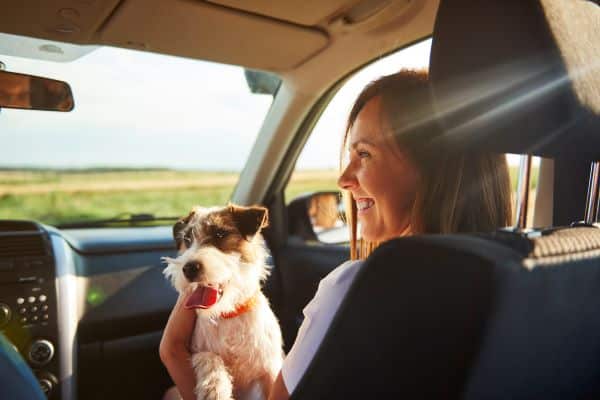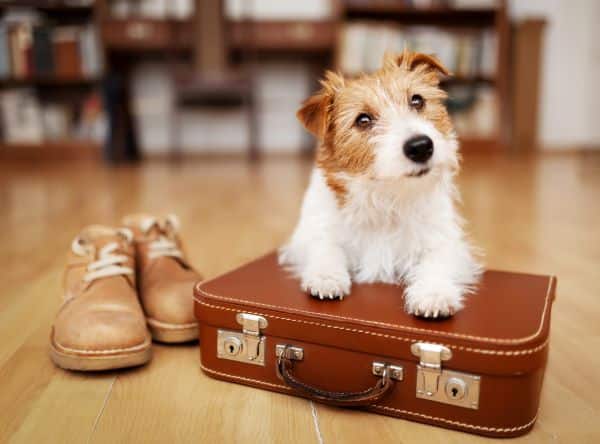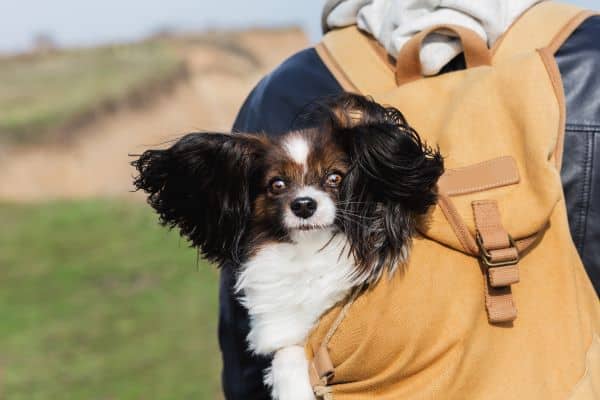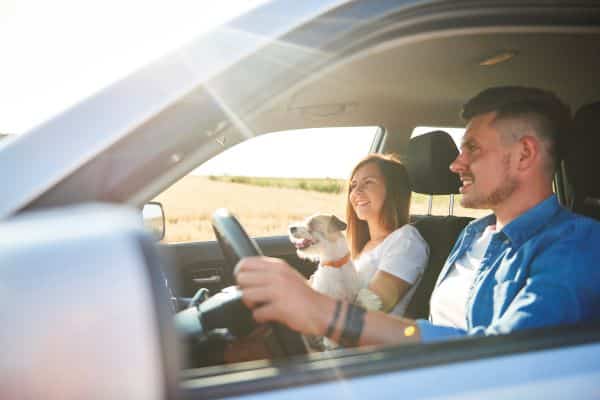Embarking on long-distance travel with a dog can be a thrilling yet challenging experience for both pet and owner. It requires meticulous planning, understanding of the dog’s needs, and a good dose of patience. This post is designed to guide pet owners through the essential steps of preparing for a journey with their furry companions. From assessing your dog’s suitability for extended travel to understanding legal requirements and handling emergencies, this comprehensive guide aims to make your travel experience enjoyable and hassle-free, ensuring that you and your canine companion can cherish every moment of your adventure together.
Contents
- 1 Assessing Your Dog’s Suitability for Long Travel
- 2 Pre-Travel Training and Socialization
- 3 Choosing the Right Mode of Transport
- 4 Packing Essentials for Your Dog
- 5 On the Road: Maintaining Routine and Health
- 6 Finding Dog-Friendly Stops and Accommodations
- 7 Handling Emergencies and Unforeseen Challenges
- 8 Unleash The Joy of Traveling With Your Canine Companion
Assessing Your Dog’s Suitability for Long Travel

Understanding whether your dog is suited for long-distance travel is crucial. Some dogs may find extended periods of travel stressful, especially if they are not used to changes in environment or routine. Factors like age, health, and temperament play significant roles in determining how well your dog can handle the journey. For instance, young puppies and senior dogs might find it more challenging to adapt to long travels compared to adult dogs.
In addition to temperament, a dog’s physical health is paramount. Certain breeds with respiratory issues or dogs with chronic illnesses may not be suitable for stressful or physically demanding travel. Before planning a long trip, consult with a veterinarian to ensure your dog is up to the challenge. This professional advice can help prevent potential health complications and ensure your pet’s safety throughout the journey.
Pre-Travel Training and Socialization

Preparing your dog for long-distance travel involves more than just physical readiness; it also includes mental preparation. Acclimating your dog to travel carriers, vehicles, and extended periods of confinement is essential. Gradually increasing travel time in a car or spending time in a carrier can help your dog become comfortable with the concept of traveling. This training reduces stress and anxiety, making the actual journey smoother for both you and your pet.
Socialization is another key aspect of pre-travel training. Exposing your dog to different environments, sounds, and people can significantly reduce their stress levels during the journey. Socialization helps your dog to adapt more easily to new situations, whether it’s dealing with crowds, encountering unfamiliar noises, or adjusting to new sleeping arrangements. A well-socialized dog is likely to be more relaxed and comfortable during long travels.
Choosing the Right Mode of Transport

The choice of transportation is a major factor in planning your journey with a dog. When traveling by car, ensure your dog is secured in a comfortable and safe space. Using a well-ventilated crate or a dog seat belt can prevent injuries and provide a sense of security. Familiarize your dog with the car environment by initially taking short drives, gradually increasing the duration.
If you’re considering air travel or public transport, research the specific policies and requirements of the service providers. Many airlines have strict regulations regarding pet travel, including the need for appropriate carriers and health certifications. It’s essential to familiarize yourself with these requirements well in advance to avoid any last-minute hassles. Remember, not all dogs are suited for air travel, especially breeds with brachycephalic (flat-faced) features, due to their susceptibility to breathing difficulties.
Packing Essentials for Your Dog

When preparing for a journey with your dog, packing the right items is essential for their comfort and safety. Your dog’s luggage should include sufficient food, water, and any necessary medications. Pack more than you think you’ll need, as accessing familiar brands or specific formulations might be challenging on the road. Don’t forget the basics, like bowls, a leash, and waste bags. Additionally, consider bringing a portable water bottle or bowl for easy hydration during travel stops.
Comfort items are also crucial in keeping your dog calm and relaxed. This includes their favorite toys, a familiar blanket, or a piece of clothing with your scent. Such items can significantly help in reducing anxiety and providing a sense of security in new environments. Remember to pack a sturdy, comfortable harness or collar with updated identification tags. It’s also wise to bring a recent photo of your dog, which can be invaluable if your pet gets lost.
On the Road: Maintaining Routine and Health

Maintaining a routine while on the road is vital for your dog’s well-being. Try to stick to your dog’s regular feeding and exercise schedule as closely as possible. This consistency helps minimize stress and keeps your dog comfortable. Plan for regular stops to allow your dog to stretch, exercise, and relieve themselves. It’s also an opportunity for you to check on your dog’s condition, ensuring they are not showing signs of distress or discomfort.
Health monitoring during the journey is equally important. Keep an eye out for any signs of motion sickness, stress, or unusual behavior. If your dog is prone to motion sickness, consult your vet about appropriate medications prior to the trip. Ensure your dog stays hydrated, especially during long stretches of travel. And remember, never leave your dog unattended in a parked vehicle, as temperatures can rise rapidly, leading to dangerous conditions.
Finding Dog-Friendly Stops and Accommodations

Researching dog-friendly stops and accommodations in advance can significantly enhance your travel experience. Look for rest areas, parks, and trails where your dog can safely explore and exercise. Many travel and pet-specific apps and websites provide information on dog-friendly locations along your route. When booking accommodations, verify their pet policies, as some places may have restrictions on size, breed, or the number of pets allowed.
Consider the amenities offered by pet-friendly accommodations. Some hotels provide special services for pets, such as dog beds, bowls, and welcome treats. Check for nearby veterinary services and pet stores, which can be crucial in case of emergencies or forgotten items. Always respect the property’s rules regarding pets, such as designated walking areas and cleanup policies. Ensuring your dog is well-behaved and quiet in the accommodations will help maintain a positive environment for everyone involved.
Handling Emergencies and Unforeseen Challenges

Being prepared for emergencies is a crucial aspect of traveling with your dog. Always carry a basic pet first aid kit, and familiarize yourself with basic first aid procedures for dogs. This includes knowing how to handle common issues like cuts, heatstroke, or allergic reactions. It’s also advisable to research and note down contact details for veterinarians and emergency pet hospitals along your route.
In the event that your dog gets lost, having a plan can make a significant difference. Ensure your dog has a microchip and wears a collar with an ID tag containing your current contact information. Carry a recent photo of your dog to aid in identification if needed. If your dog goes missing, act quickly by contacting local animal shelters veterinary clinics, and posting in local and online lost-and-found pet groups. Prevention is key, so keep your dog on a leash in unfamiliar surroundings and never leave them unattended in public spaces.
Unleash The Joy of Traveling With Your Canine Companion
The key to a successful and enjoyable long-distance journey with your dog lies in thorough preparation and an understanding of your pet’s needs. Every step, from pre-travel training to handling emergencies, plays a crucial role in ensuring a safe and stress-free experience for both you and your furry companion. Now, with these tips in hand, you’re ready to embark on your next adventure with confidence. Remember, the memories and bonds forged during such travels are priceless, making every effort worthwhile.


